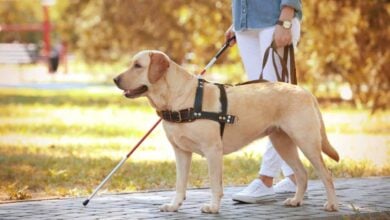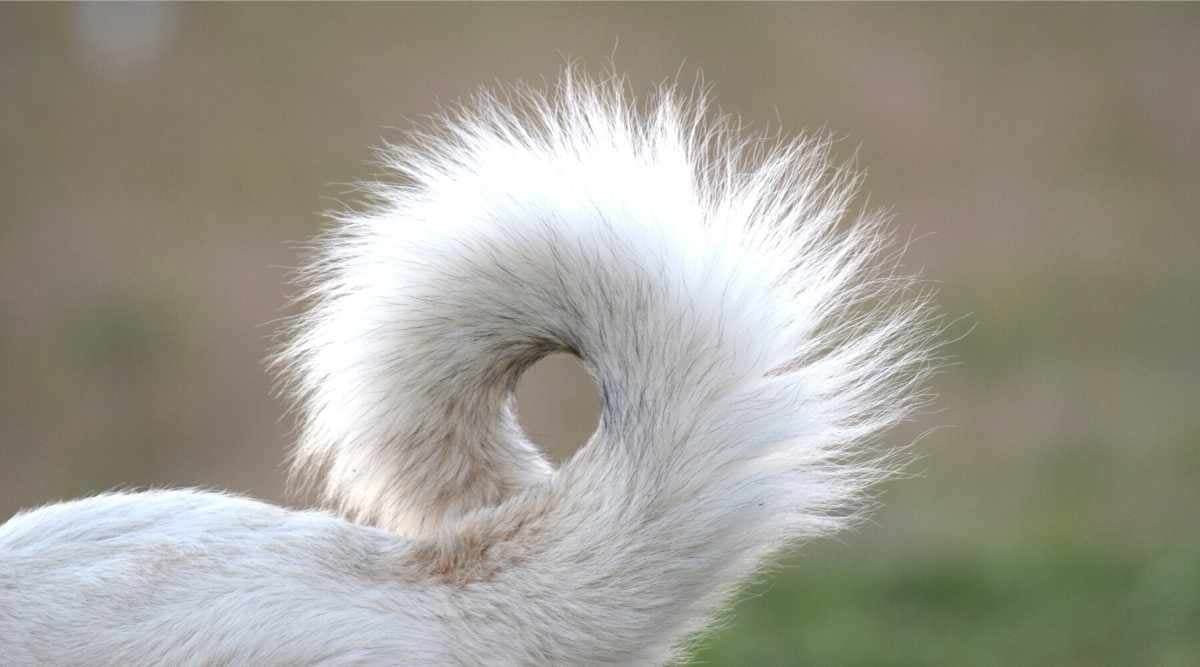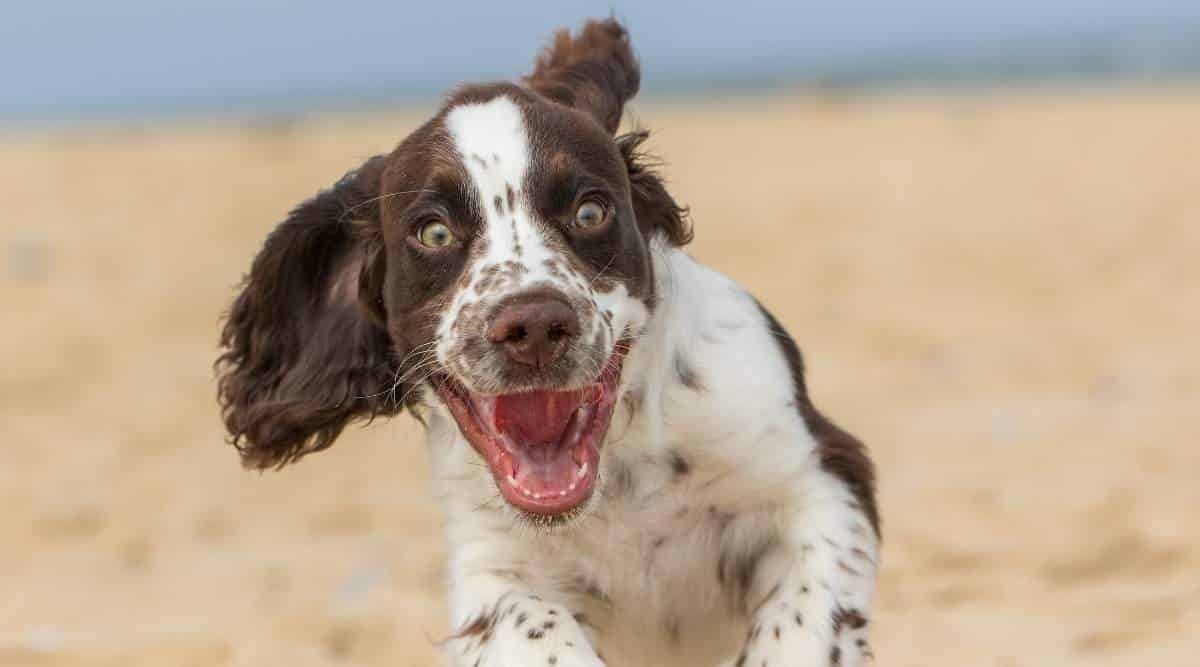Pharaoh Hound Information: Breed Facts, Traits & More
When you purchase through links on our site, we may earn a commission. Here’s how it works.
The Pharaoh Hound, also known as the Egyptian Pharaoh Hound by some, is a hardy dog breed that’s friendly and smart. But how much do you know about this noble, “blushing” pup? There’s more to this graceful, powerful breed than meets the eye. Let’s jump in and learn more about why this royal pup was the choice of Egyptian Kings. They are extremely rare dogs, so you will surely be the only Pharaoh family in the neighborhood.
Table of Contents
Breed History
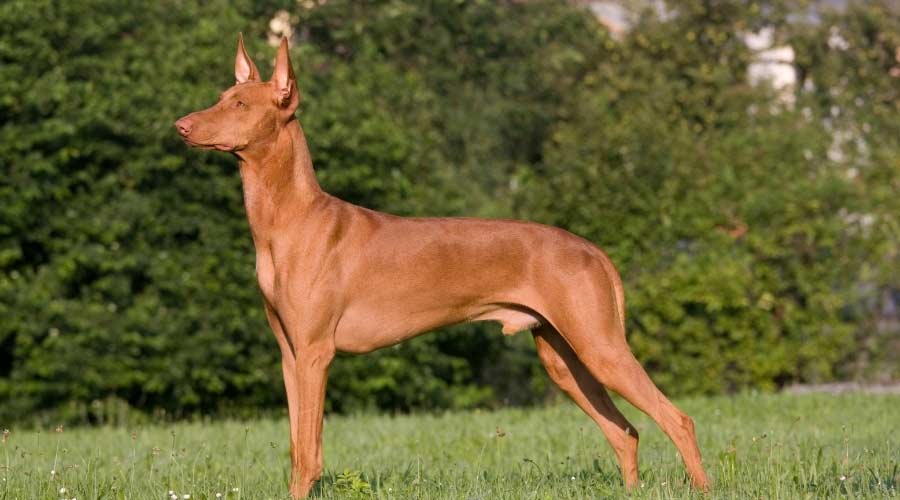
Many stories surround the history of the Pharaoh Hound, but the most accepted theory is that they originate from Egypt, making him one of the few African dog breeds. Artifacts dating back to 4,000 B.C. depict a canine almost identical to the current breed, making him one of the oldest domesticated dog breeds on the planet.
If you are into Egyptian history, you will find reliefs of the Pharaoh Hound in the tomb chapel of Mereuwka and Senbi. Unlike many dog breeds, their physical appearance hasn’t changed much across many thousands of years.
From there, it is believed that Phoenician traders were responsible for trading Pharaoh Hounds around the globe in return for luxury goods. One special place for this breed is Malta. Here, they became an instant hit with rabbit hunters. In Malta, they are called the ‘Kelb tal-Fenek,’ which translates to ‘dog of the rabbit.’ The breed is beloved in Malta, so much so that it was named the official Maltese dog breed in 1979.
This breed remained relatively unknown in most of the world until the late 20th century. They first arrived in the UK in the 1930s and didn’t arrive in America until 1967. Three years later, the Pharaoh Hound Club of America was established. The American Kennel Club (AKC) recognized this breed in 1973 in the miscellaneous class, and 1984 added it to the hound class.
In 2023, the AKC ranked the Pharaoh Hound 176th out of the 200 most popular dog breeds in the U.S., which shows just how few there are.
Pharoah Hound Temperament
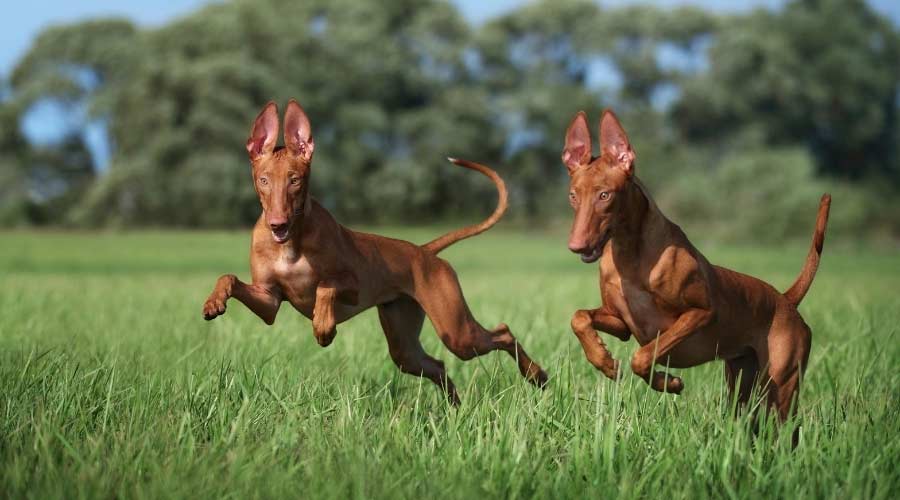
First and foremost, the Pharaoh Hound is a scent and sighthound. Most hounds rely on just one sense. So, if you’re after a hunting dog, the Pharaoh is the top dog. But if you are looking for a calm dog able to walk off-leash and follow your commands over its nostrils, this is not the dog for you.
Like most other hounds, they are aloof with strangers. They are not aggressive in any way, but they show little interest in non-family members. When it comes to their family, they are very affectionate, and they love to snuggle up on the sofa (once they’ve burned off their energy.) Many Pharaoh Hounds are known to form a special bond with one person, usually their primary caregiver.
Family life is a great choice for this breed because they are loyal and kid-friendly. The Pharaoh Hound can be sensitive and shy around strangers but does tend to do well around other dogs.
Potential owners need to know about a few quirks of the Pharoah Hound’s temperament. The first one is that they are a very vocal dog breed. Whether it’s something super exciting or something they are displeased with, you’ll definitely know about it. This is great for those looking for an alert watchdog.
The other quirk is that they are expert counter-surfers. Even when fully trained, the temptation to grab that block of cheese or chicken leg from the table can prove to be too much. These guys LOVE food and will do anything for a tasty treat. For this reason, you need to be patient with these potentially mischievous pups. But it’s all part of the Pharaoh’s fun and charm.
Despite these quirks, the Pharaoh Hound is a comical and silly pup who loves nothing more than to entertain its favorite humans. This means a constant supply of fun for the whole family. When they smile, their grin spreads from ear to ear, and their zest for life is infectious. This trait (and many others) draws Pharaoh lovers back to the breed time and time again.
Size & Appearance
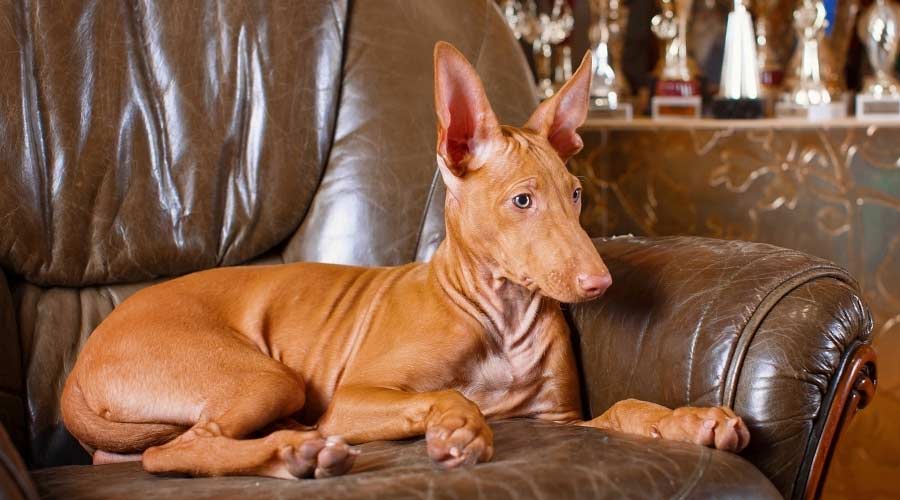
The Pharaoh Hound is a medium-sized dog with an athletic build, weighing between 45 and 55 pounds. Males tend to be larger than their female siblings. Males are slightly taller, typically measuring between 23 and 25 inches tall. Compared to females who measure between 21 and 24 inches, from paw to the withers (shoulder). So, this measurement doesn’t include their sky-high ears. Their ears are their most prominent feature and are exceptionally huge when they are puppies.
Unlike other breeds of dogs, such as Doberman Pinschers, which require ear clipping or taping to make their ears stand on end, the ears of the Pharaoh Hound naturally stand tall, which contributes to this dog’s fantastic hunting ability.
Their frame is slender and athletic, and you’ll rarely come across an overweight Pharaoh. With a deep chest and skinny waist, they look like a typical fast-footed hound. They have similar shapes to Greyhounds and Salukis, for whom they are often mistaken. But once you know what a Pharaoh Hound looks like, it’s difficult to mistake this majestic pup for anything else.
Pharaoh Hound Blushing
A unique trait of the Pharaoh is their ability to blush. Their ears, cheeks, and chest glow a reddish-pink color. This is why they are sometimes called the blushing dog of Malta. It is common for Pharaoh Hounds to have a white tip on the end of their tail. This was bred into the bloodline to help farmers see their Pharaohs when hunting on earthy-colored terrain.
If you want to show your Pharaoh in the competitive ring, they’ll need to conform to the Pharaoh Hound breed standard. A white patch on the back of the neck, shoulders, or any part of the back or sides is undesirable. But, if you don’t plan on showing them, you don’t have to worry about this; their appearance does not affect their ability to be good boys or girls.
Pharoah Hound Coat & Colors
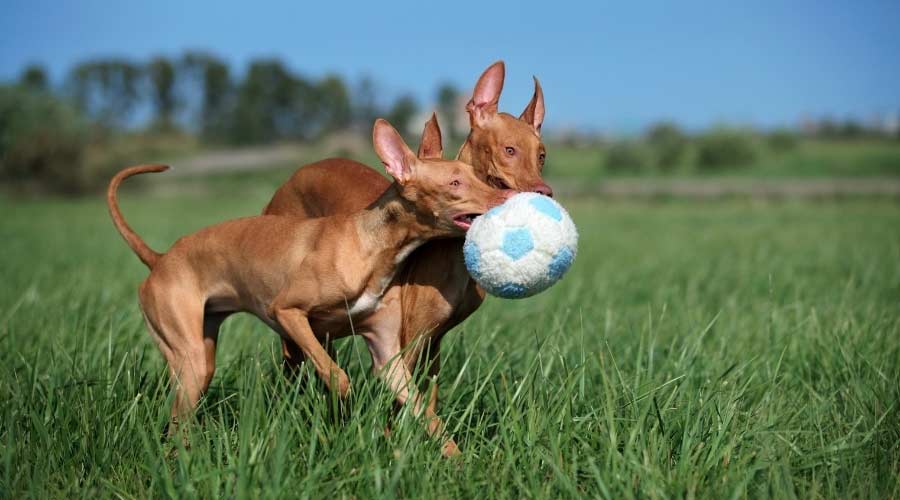
The Pharaoh Hound has a short and glossy coat that is super easy to groom. Its straight fur can fall anywhere between fine and slightly harsh when it comes to texture. They have a double coat that sheds lightly during the shedding seasons. Despite being low on the shedding scale, they are not a hypoallergenic breed. Officially, there are four shades listed: chestnut, red golden, rich tan, and tan.
Coat shades can range from a rich tan to a chestnut tan with specific white markings. The acceptable white markings are a white tail tip, white on the chest, white on the toes, and a slender white marking on the center of the face. Any other white markings are unacceptable according to the breed standard as the AKC defines them.
Exercise Requirements For Pharoah Hounds
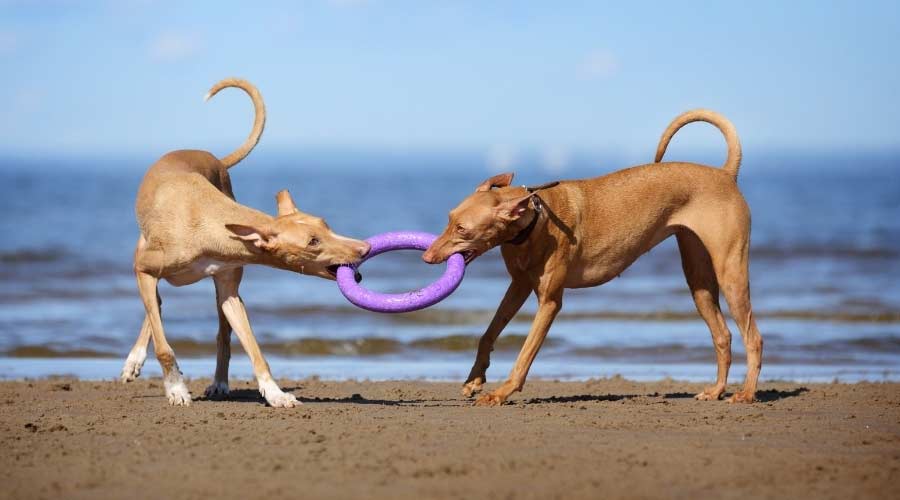
Pharaoh Hounds need an average of one hour of exercise every day. So, it’s safe to say that they need to be placed with an active family who can guarantee them this fitness level. Without adequate exercise, they could become destructive and problematic. A tired dog is a happy dog.
A great way to burn off their explosive energy is to enroll them in local lure coursing events. Chasing fast and furry animals is in their DNA, and it will keep them happy and fit, too. These are controlled and safe environments to let your Pharaoh off leash and chase until his heart’s content. I don’t recommend letting these guys off leash unless in a secured environment because they will run away out of sight for sure.
In addition to physical stimulation, you’ll also want to exercise a Pharoah Hound’s mind. Be sure to give them a long walk at a minimum each day, and a chance to run is ideal. One thing to note is that Pharaoh Hounds can jump really high, so a six-foot fence is the best choice to keep them in your yard. Brain games and toys are helpful tools for mental stimulation, and games like fetch can help them exercise mentally and physically. Look for interactive toys to keep their minds active and prevent boredom.
Living Conditions
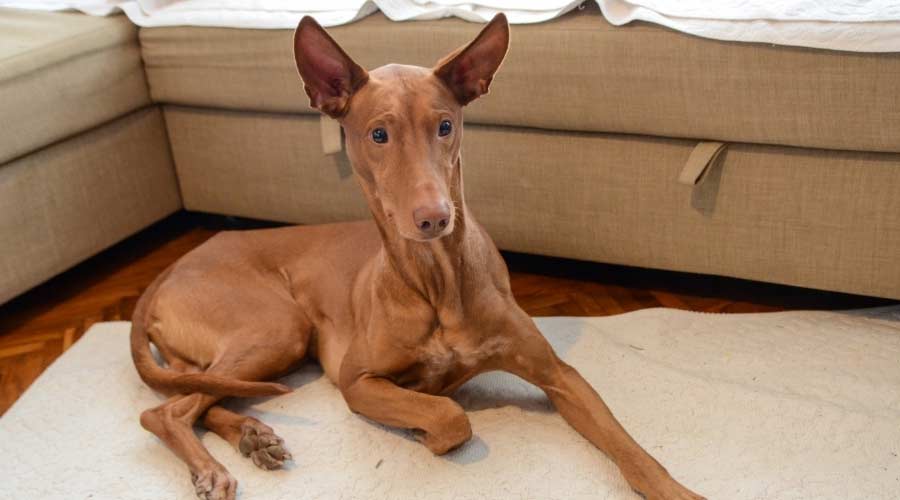
Pharaoh Hounds don’t like to spend too much time alone as they are sensitive pups. So, they’ll need to live with a family who does not work long hours away from home. They could happily live in an apartment if well exercised.
Like most dogs, they would be thankful for a backyard to relax and play in. If they are lucky enough to have this, you’ll need to have fences that are a minimum of six feet tall. Pharaohs can jump incredibly high when chasing visiting yard animals, so be sure to keep them securely contained.
Pharaohs are sweet dogs that tend to get along well with children. And children tend to love them too because they are not overly boisterous. With the proper training and socialization, they can easily fit themselves into a multi-pet household, making them great options for families of all shapes and sizes.
Training Your Pharoah Hound
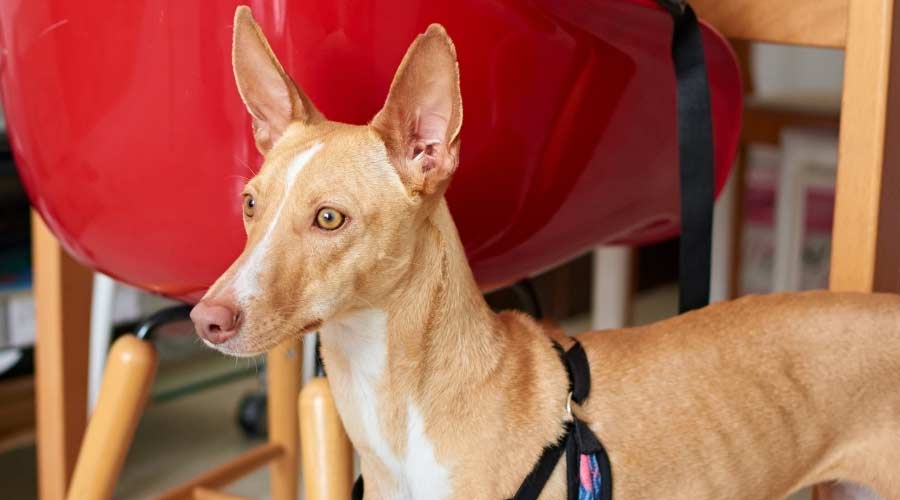
Pharaoh Hounds are trainable pups. However, their strong prey drive can make them stubborn, commonly following their sight and smell over your commands. If you are seeking a fully obedient off-leash dog, the Pharaoh might not be the best choice for you. Recall training is still advised just in case they slip their leash. Getting those basic commands down early and reinforcing them as needed is imperative.
The positive reinforcement training method is best for your Pharaoh. They are sensitive pups who do not respond well to harsh training or masters. They are highly motivated by food, so be sure to use treats in their training sessions. Socialization from a young age is also valuable because it teaches them how to interact with other dogs, humans, and the world around them. Taking them to the local doggy park is a great way to mix them with four-legged friends.
Because the dog is such a vocal pup, teaching them the “quiet command” will be a crucial part of your training schedule. Otherwise, headaches and frustrated neighbors are forecasted for the next fourteen years or more. Start training your dog as soon as they come home with you for the best results. For help with training, you can consider an online training course or learn more about finding the right trainer.
Pharoah Hound Health
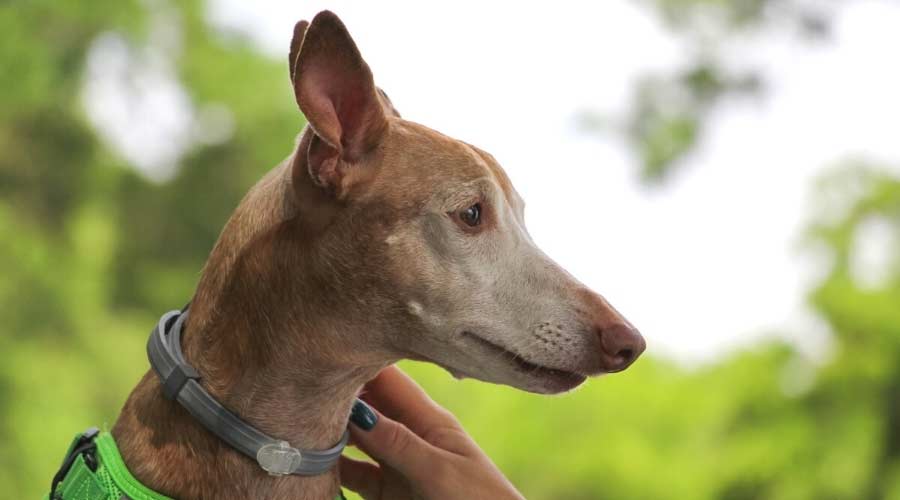
Pharaoh Hounds have a lifespan of 12 to 14 years. But like all dog breeds, they are prone to some health conditions more than others. This is why working with a reputable breeder who screens for predisposed concerns is recommended. Let’s take a look at these conditions.
Hip Dysplasia
Hip dysplasia is one of the most common canine skeletal problems. A Pharaoh can inherit poor hips from their parents, so it’s important to ask for their hip scores. It can also occur when the hips grow too rapidly as a puppy. Symptoms include mobility problems or struggling to sit, stand, and climb.
Eye Conditions
Eye conditions are another common concern in dog breeds. The most common eye condition found in the Pharaoh is distichiasis. This occurs when the eyelashes grow inside of the eyelids, irritating and damaging the eye. Other eye-related issues that plague this breed are progressive retinal atrophy (PRA), cataracts, and glaucoma. Symptoms include light sensitivity, bumping into things, and pawing at their eyes.
Thyroid Concerns
The Pharaoh is more likely than most other breeds to experience thyroid gland problems and other hormonal imbalances. Hypothyroidism is the most common thyroid condition. Although it can be managed with medication, without a diagnosis, it can be life-threatening. Cushing’s disease is another hormonal imbalance concern to watch out for.
Patella Luxation
This is another skeletal concern, but this time, it affects the knee joint. The kneecap fails to sit properly on the joint and floats. Although this doesn’t sound serious, it can be very painful for the pup. Symptoms of a luxating patella include irregular gait, kicking out with the affected leg, and general pain.
Along with these, Pharoah Hounds are also prone to von Willebrand’s Disease, elbow dysplasia, sensitive skin, and medication sensitivities, and they are prone to frostbite on their ears.
Consider Pet Insurance
Getting pet insurance when your pup is young is best, as many providers do not cover pre-existing conditions. Learn more about pet insurance and what it covers, and see our detailed reviews of the best pet insurance companies. We also cover how to get financial assistance with vet bills.
Pharoah Hound Nutrition
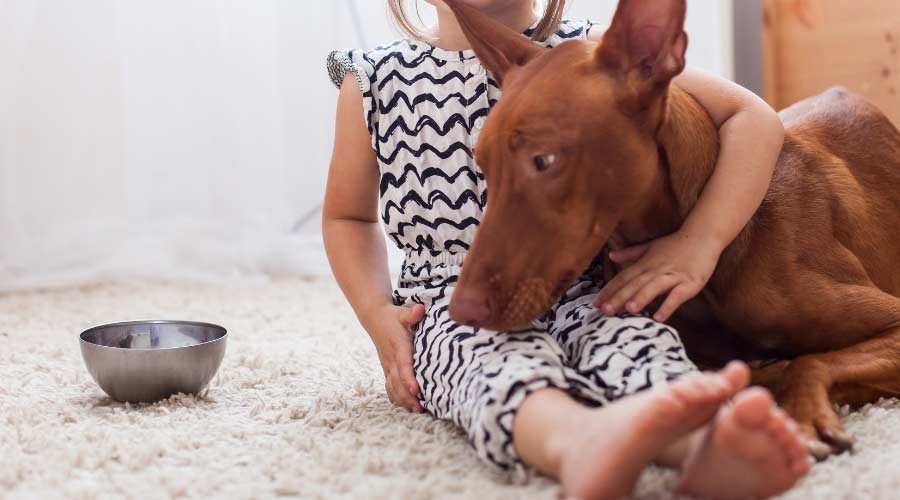
How much you feed your Pharaoh will depend on many factors, including their age, weight, and activity levels. A typical Pharaoh Hound will consume between 1 1/2 and 2 cups of food every day, split into two meals. But their love of food means that they will eat whatever you put in front of them, so it’s important not to overfeed them.
Feeding an age-appropriate kibble is very important to ensure that you meet the nutritional needs at each life stage. This is particularly important during their developmental stage as they need more protein and fats to grow healthy and strong. Although you might need to spend a little more on high-quality dog food, you can rest knowing they will be much healthier.
When it comes to choosing the right dog food, it’s always best to ask your vet. They can tell you what your pup’s nutritional needs are, and then you can read what our experts have to say about the best dog foods for most diet types, ages, and health concerns. We can even guide you on the best dog food delivery options.
Grooming
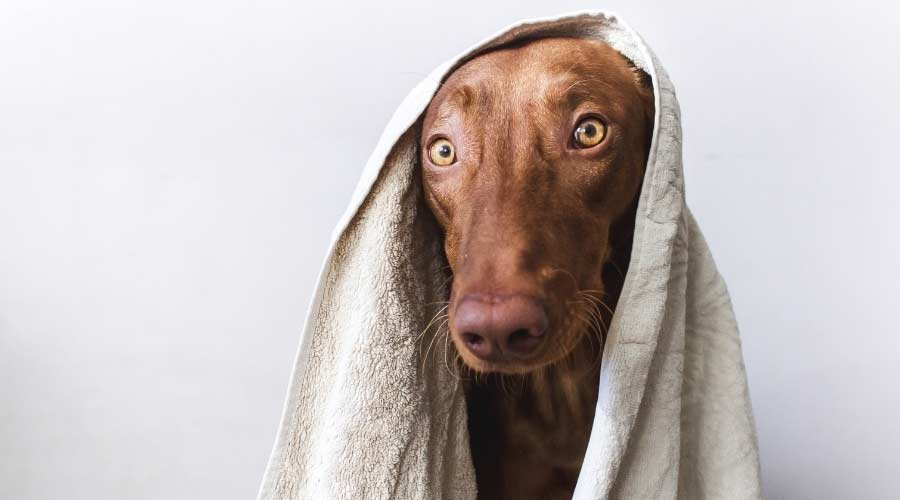
Pharaohs only need brushing once a week with a hound brush. This is a rubber mitt that will remove any dirt and dead hair, keeping it off your furniture and clothes as much as possible. Professional grooming is rarely needed unless you fancy spoiling your pup with a spa day. We review some of the best dog brushes and de-shedding tools here.
This breed isn’t particularly smelly, and you should limit bathing to once every three months to avoid damaging their coat. Because this pooch has such a fine coat and loves to run through bushes, its skin is prone to nicks and scrapes. This can lead to sores and infections, so be sure to check under their belly and legs and keep any sores clean.
You must also regularly check those big ears and keep them clean. Learn more about how to clean your dog’s ears in our detailed guide.
Pharaoh Hounds have a thinner muzzle than most, meaning their teeth are more cramped. This is why you should brush their teeth two to three times a week to keep periodontal diseases at bay. Keep their nails trimmed, too. You’ll know when they become too long because you’ll be able to hear them tapping on the floor.
How Much Does A Pharaoh Hound Cost?
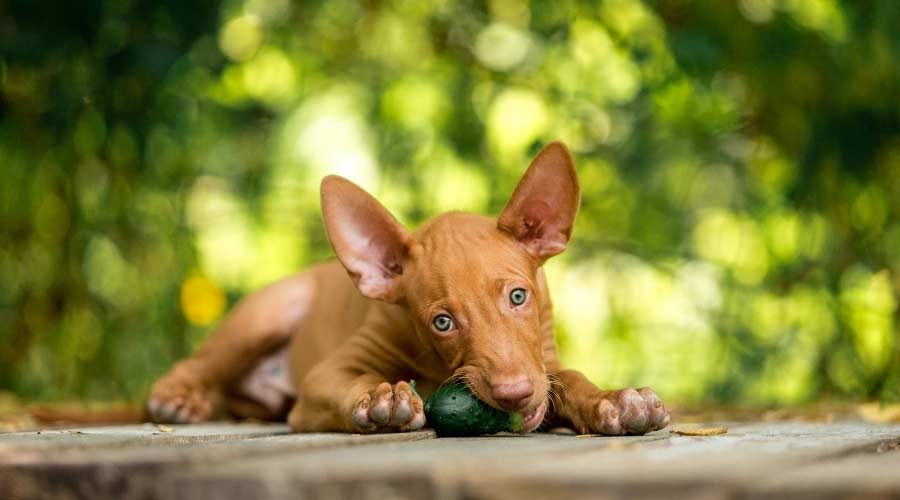
There are limited Pharaoh breeders in the United States. Depending on where you live, you will probably have to travel to find a reputable and responsible breeder. A great place to start your breeder research is on the AKC’s Pharaoh Hound breeder list.
Responsible breeders will only breed Pharaohs who pass all of the relevant health checks. And don’t take the breeder’s word for it, be sure to see the certificates to prove it. Always meet the puppies in person, in their home environment, with at least one parent present. Reputable breeders will be knowledgeable and ask you lots of questions about your lifestyle.
The average starting price for a Pharaoh puppy from a responsible breeder is around $1,500 to $2,500. They are reportedly one of the most expensive medium-sized breeds to buy as they are so rare. Irresponsible breeders and puppy mills work by tempting customers with lower prices. But the pup is usually unhealthy and unsocialized, so please don’t be tempted to work with them.
Remember that there are ongoing lifetime costs to think about as well. Setting up your home with everything your puppy needs can be pricey. Plus, insurance costs and unexpected medical expenses can be very costly. Thankfully, the Pharaoh Hound isn’t one of the most expensive dogs to care for when compared to a Mastiff or a breed predisposed to many health concerns.
Rescues & Shelters
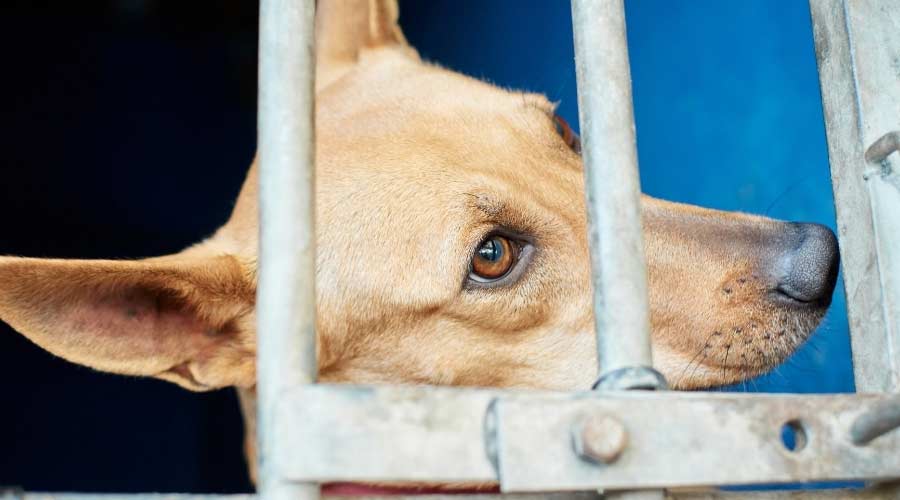
Buying a puppy is not the right choice for everyone or every situation. There are far too many rescue pups who need loving homes so adopting from a shelter is a great choice. However, it is unusual for a Pharaoh to end up in a rescue shelter, considering how uncommon they are. And when they do, they are likely to be snapped up quickly.
The Pharaoh Hound Club of America’s rescue program is a great place to begin your search for a rescue hound.
Pharaoh Hound Puppies
This sweet one-minute video from Eneha Nonoba shows some adorable clips of the cutest Pharaoh Hound puppies in action.
Pharaoh Hound vs Ibizan Hound vs Greyhound vs Anubis Hound
These breeds are often compared to or mistaken for the Pharoah Hound. However, they are all much different breeds.
Ibizan Hound vs Pharaoh Hound
The Ibizan Hound and Pharaoh Hound are quite similar in appearance. However, Ibizans are slightly larger, and their coloring is redder than the Pharaoh. Both are active breeds that require a good amount of exercise and can be loving and loyal. Pharaoh Hounds tend to be a bit more social than Ibizans, but both are family and kid-friendly.
Pharaoh Hound vs Greyhound
While Pharaoh Hounds and Greyhounds are similar breeds, their distinct features easily set them apart. The Pharaoh Hound has erect ears and a tan and white coat, while the Greyhound’s ears are not erect, and they have a wider range of coat colors. Both breeds are active, easy to train, and are wonderful family pets.
Pharoah Hound vs Anubis Hound
However, some people think the Anubis Hound, which looks like a black Pharoah Hound, is a type of Pharoah Hound, but it isn’t. This hound is related closely to the Pharaoh Hound and may also be related to the Doberman Pinscher. It originates from crossing the Pharaoh Hound with a black coat. Their coats can be all black or sometimes black and tan.
If you’re looking for an elegant breed with lots of energy, the Pharaoh Hound might be the right breed for you. For more information about Pharaoh Hounds, check out the Pharaoh Hound Comprehensive Owner’s Guide.
Keeping Your Dog Healthy From Puppy To Senior
No matter the breed or mixed breed you welcome into your home, you must work hard from the first day they come home to keep your dog healthy. A healthy lifestyle and diet are key to keeping your pup by your side as long as possible. Keep up with vaccinations and preventive health check-ups with your vet. Learn 12 secrets to living a long life as a dog; if you need guidance on picking the right veterinarian and what makes a good vet, we have some tips that can help.
Why Trust Canine Journal?
Emma is a mom to two dogs, a senior mix called Bonkers and an adolescent Doxie called Chips. Emma has invested much time and research on interactive dog breeds and care. She is passionate about writing about her canine experience, both personally and as a professional dog walker and sitter. Emma works with a highly dedicated team at Canine Journal to ensure they provide their readers with the best and most up-to-date information.
